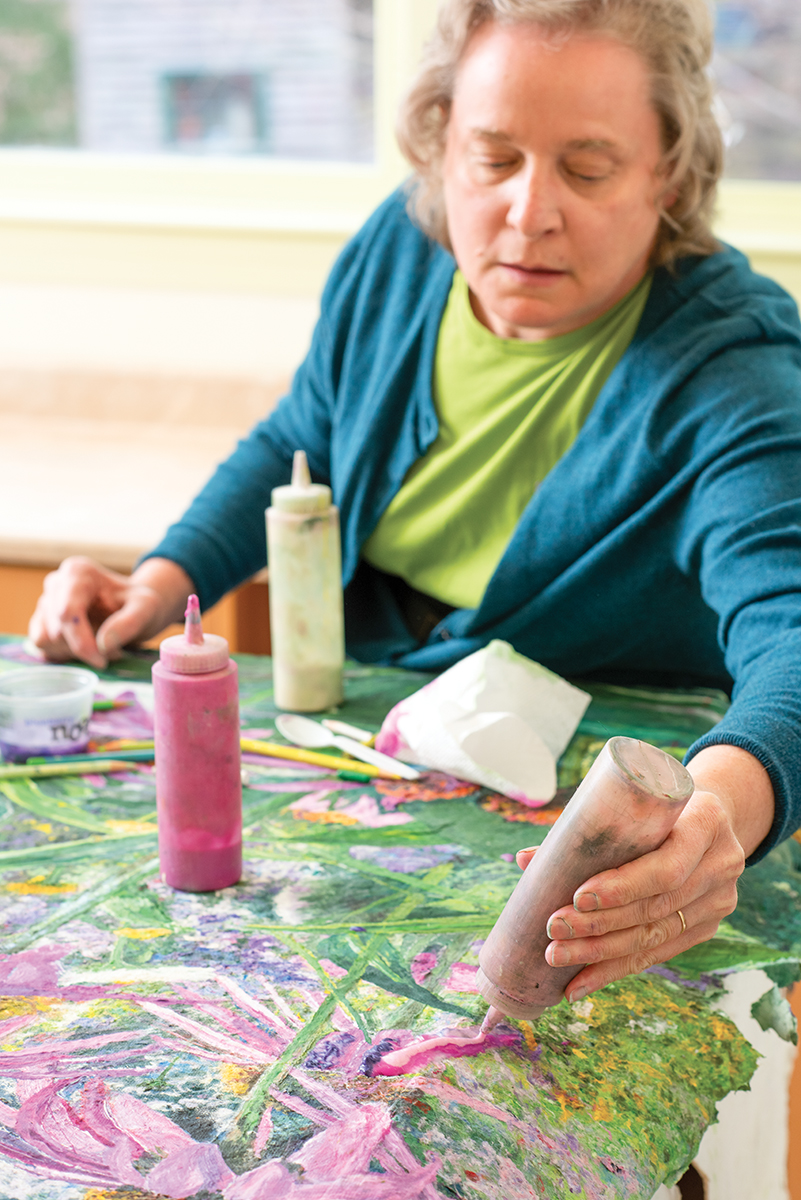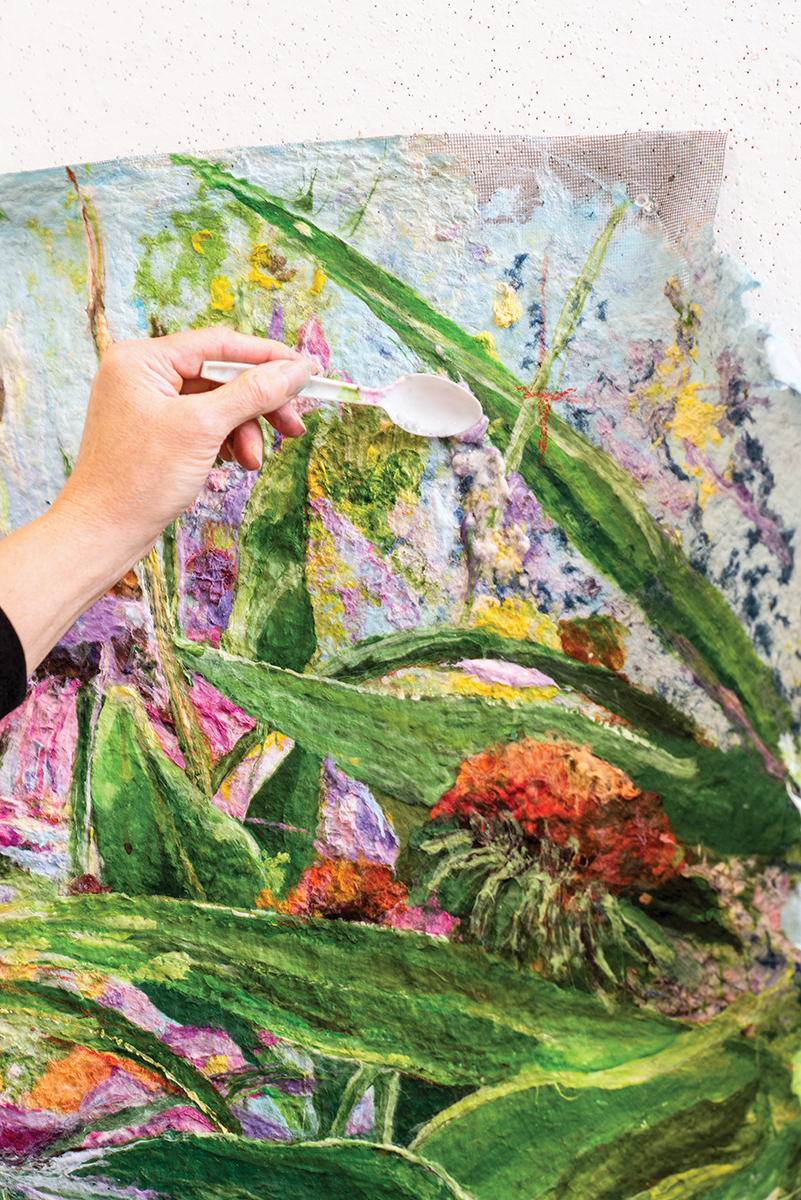
Artist Meg Black immerses herself in her larger-than-life canvases.
Little did Meg Black know that a simple cluster of coneflowers performing in a roadside pocket garden would change everything when it came to her paintings. Gardens were an early inspiration for her canvases. While studying art in her native Syracuse, New York, Meg became fascinated by the interplay of colors in flower gardens, and she expressed that intrigue in her initial watercolors. However, when she moved from landlocked Syracuse to harborside Boston, she developed a love of the ocean and spent years capturing the mesmerizing hues of seafoam, waves, and tidal pools. But artists go through life with eyes wide open, and one day while on her daily bike ride around her own North Shore neighborhood in Massachusetts, Meg rediscovered gardens. But this time around, she approached flowers from what she refers to as a “snail’s perspective.”

Abaca is the strongest of fibers and must be beat for 20 hours before the cell walls will mix with pigment to be applied with Meg’s artistic tools. “It’s a combination of art and science,” says Meg.
Meg had just finished reading Virginia Woolf’s short story “Kew Gardens,” narrated by a snail who spends his days eavesdropping on passersby while also observing the intricacy of forms and colors playing off the petals and leaves in his domain. It was this story that prompted Meg to bring her bike to an abrupt halt beside a thicket of coneflowers by the road. Like the snail, she got down on her knees and crawled into the flowers where she discovered a world much deeper than the usual observations of a detached onlooker. She gained a whole new perspective and forged an intimacy with nature beyond anything she experienced in her previous artistic encounters. That’s when she returned to her roots and began painting gardens again—but this time around, she was completely immersed.

To create detail, depth, and the sensation of being in a garden, Meg paints with squeeze bottles.
Meg also brought another new element to her work as she had recently developed a unique method of creating art with some out-of-the-box tools such as spoons, scoops, and basters. She uses these utensils to mix her colors with abaca, a member of the banana family. To give her creations realism and dimension, she massages the abaca into a pulp and then applies it to a canvas, building up surface consistency and giving depth to her work. She then fills the spoons, scoops, and basters with paint and pours more color into the scene, guiding it through the pulp to steer its path and capture precise hues that reflect both light and shade as seen in nature. Like gardening, it’s a very tactile and hands-on process, and the result is uniquely visceral. “You can almost feel the plants,” she says of the “you are there” sensation.

Unlike most artists, Meg does not use brushes. Instead, she mixes pigments in cups, blends them in her hands, and then applies mixed colors with spoons.
When working on any composition, Meg often returns to the scene of her inspiration. In this case, she revisited the coneflowers with a camera in hand to remember the forms she was striving to capture. For the colors, she came with a sketchbook, scribbling notes to bring back to her home studio. And as she studied that tiny patch of blossoms, she discovered that the “view-on-all-fours” solved many of the issues presented by the plein air viewpoint. “The problem you often face is too much infinity,” she says. “But painting should be about isolating a snapshot in time. I want to tell the story of that moment by capturing the nuances, the light, and the life.” And of course, she is constantly translating and balancing what she sees, pulling elements in and out of focus and tweaking colors to work as a composition. “Artists are problem solvers,” she says.
It was a turning point for Meg. After a couple of canvases capturing those coneflowers, she found further inspiration in poppy fields, peony rows, and other gardens spilling with color. Any place where she sees profusion and magical light serves as a point of departure for a composition to sprout. And it’s all thanks to a snail that opened her eyes and began an epic journey.
See more of Meg Black’s work and process on Instagram and her website.
By Tovah Martin | Photography by Kindra Clineff



